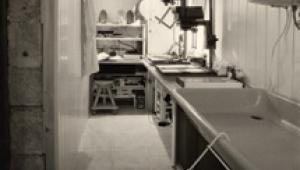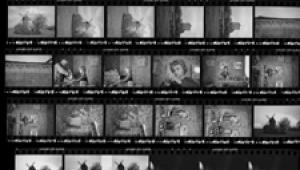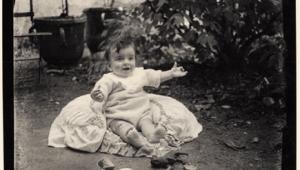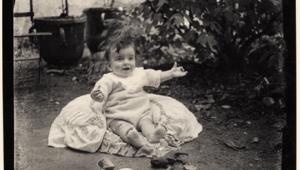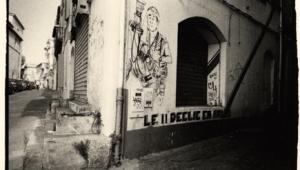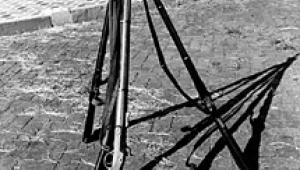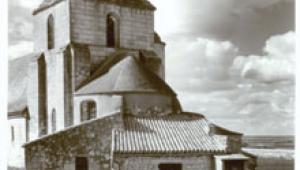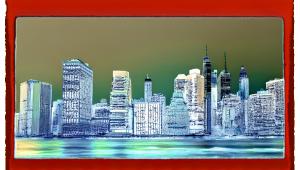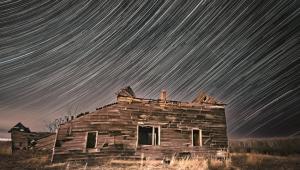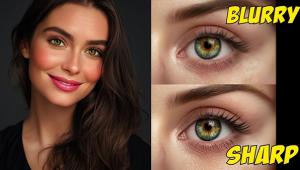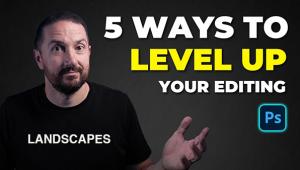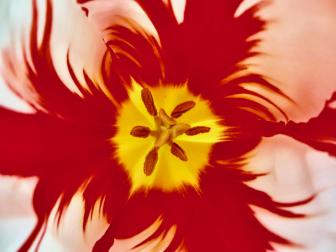Even if we are now in digital age, there are still photographers who are using dark rooms in developing their photos but I think its more creative and more authentic. - YOR Health
The Darkroom
Coping With Change; Two Dozen Tips On Dealing With Diminishing Film & Darkroom Material Page 2
8. Seek others' advice, but be wary of it. Different materials
suit different photographers. We've all seen photographers who
can wring superb results from materials that are all but useless in our own
hands, and many of us have had the embarrassing experience of recommending our
own favorite combination, only to see that the other photographer just can't
get on with it. And the Internet is a hotbed of strongly held and sometimes
indefensible opinions.
9. Be promiscuous (at least photographically). To a large extent, this flows from #8. A common piece of advice is to choose one film and one developer (or one paper and one developer, or one toner, or whatever) and use nothing else for six months or a year. But what if it is the wrong combination for you? Now is the time to try as many film/developer combinations or paper/developer combinations as you can afford. I've always found that the "magic" is either there, or it isn't, from the first use. Once you've found a "magic" combination, that is the time to stick with it for a year.
10. Accept that this is going to cost you money. We can't tell you how much. You might be lucky and hit on the perfect combination with your first attempt--or you might have to try half the products on the market. Allow around $200 for the changeover for either film or paper: unless you're very unlucky, this should see it through comfortably. There's more about how to reduce the cost later. Sure, it's an unwelcome one-off expense, but it is only a one-off, and if you keep proper notes, you may emerge from the transition as a better photographer. And setting a budget beforehand is psychologically easier than making an open-ended commitment: it helps set a framework.
11. Use enough materials to make the test meaningful. As I say, this might be as little as a single roll of new film--but I wouldn't want to try to form an opinion about a new paper with fewer than 10 sheets, and I'd prefer 25 or even 50 sheets.
12. Consider splitting packages with friends (maybe a good reason to join a camera club?). A box of 100 sheets of paper will allow 2-10 photographers to do their own testing. They can also share results, but #6 limits the usefulness of this. Break down developers into smaller bottles: drugstores may (or may not) be willing to sell you brown medicine bottles for this purpose.
13. "Borrow" developers from friends (this is a euphemism because they won't want them back when you have finished with them). But they may be willing to let you try 100ml out of a 1 liter bottle of their favorite developer--or they may swap it for 100ml of yours or, if they're cheapskates, charge you 1/10 of the price of a liter.
14. Bulk buy. If (like so many photographers) you have to rely on mail order, plan your testing; make a list; see if any of your friends want to come in on the order; and send in a single, consolidated order. You can save a fortune on shipping costs, as compared with numerous small orders. It will help you plan your testing better, and in a sense it's part of #10.
15. "Clip test" films. A single 36-exposure film can be cut into three 12-exposure lengths, to try different developers or development regimes. Even a 120 film can furnish at least two tests. Don't worry about trying to cut between frames: this is a test roll, remember, not Great Art.
16. Don't shoot important subjects when you switch to a new film or developer. Shoot your typical subjects, certainly: portraits if you're a portrait photographer, landscapes if you're a landscape photographer. But once again remember that you aren't shooting Great Art: you're shooting to test tonal range, tonality, grain, contrast, sharpness.
17. Try to find the limits of performance of the new materials. How are they with "average" subjects? High key? Low key? Even if you don't normally shoot such subjects, make an effort, just to see what happens.
18. Deliberately abuse new films: grievous underexposure, heavy overexposure, wild overdevelopment and underdevelopment. This may not reflect the way you normally work but most of us make mistakes sooner or later and it's useful to know what you can get away with. Besides, you might find an effect you like.
19. When you are testing new papers, use negatives you know printed well with your previous paper. Choose several prints that you really like; go back to the negatives; reprint them on the new paper. You know you can get a good print on the old paper: what is the new paper like? See also #21.
20. With new papers, try a few negatives that you never really liked on your old paper. You might be surprised at how well some of them print. Or of course you might not.
21. Always try to analyze what you like and don't like: image color, tonality, grain rendition, paper texture. This is more useful than a blanket "I don't like that as well" because it may suggest how to change things: a different paper developer (warm-tone, cool-tone) or film developer (fine-grained, acutance). Even toning.
22. Read. Look at books and magazines, and at websites you can trust (I'll immodestly recommend www.rogerandfrances.com as well as of course www.shutterbug.com). Some will give you ideas for pictures, but be sketchy on technical details; others will give you technical ideas, even if you aren't impressed with the pictures. If you're lucky, you learn about both.
23. Seek others' opinions. This is a bit like #8, but the difference is that you don't ask their advice about materials: you just show them finished pictures. If they prefer your new prints to your old prints (and they may well), then ask yourself whether you are suffering from hardening of the categories: "I've always done it this way, so this is the only way to do it."
24. Stop looking at the change as a chore. Think of it as fun. You're trying new materials; you've got a cast-iron excuse for working in the darkroom; and you may even end up as a better photographer. You are very unlikely to end up as a worse photographer. On a scale of one to 10, how bad is this?
9. Be promiscuous (at least photographically). To a large extent, this flows from #8. A common piece of advice is to choose one film and one developer (or one paper and one developer, or one toner, or whatever) and use nothing else for six months or a year. But what if it is the wrong combination for you? Now is the time to try as many film/developer combinations or paper/developer combinations as you can afford. I've always found that the "magic" is either there, or it isn't, from the first use. Once you've found a "magic" combination, that is the time to stick with it for a year.
10. Accept that this is going to cost you money. We can't tell you how much. You might be lucky and hit on the perfect combination with your first attempt--or you might have to try half the products on the market. Allow around $200 for the changeover for either film or paper: unless you're very unlucky, this should see it through comfortably. There's more about how to reduce the cost later. Sure, it's an unwelcome one-off expense, but it is only a one-off, and if you keep proper notes, you may emerge from the transition as a better photographer. And setting a budget beforehand is psychologically easier than making an open-ended commitment: it helps set a framework.
11. Use enough materials to make the test meaningful. As I say, this might be as little as a single roll of new film--but I wouldn't want to try to form an opinion about a new paper with fewer than 10 sheets, and I'd prefer 25 or even 50 sheets.
12. Consider splitting packages with friends (maybe a good reason to join a camera club?). A box of 100 sheets of paper will allow 2-10 photographers to do their own testing. They can also share results, but #6 limits the usefulness of this. Break down developers into smaller bottles: drugstores may (or may not) be willing to sell you brown medicine bottles for this purpose.
13. "Borrow" developers from friends (this is a euphemism because they won't want them back when you have finished with them). But they may be willing to let you try 100ml out of a 1 liter bottle of their favorite developer--or they may swap it for 100ml of yours or, if they're cheapskates, charge you 1/10 of the price of a liter.
14. Bulk buy. If (like so many photographers) you have to rely on mail order, plan your testing; make a list; see if any of your friends want to come in on the order; and send in a single, consolidated order. You can save a fortune on shipping costs, as compared with numerous small orders. It will help you plan your testing better, and in a sense it's part of #10.
15. "Clip test" films. A single 36-exposure film can be cut into three 12-exposure lengths, to try different developers or development regimes. Even a 120 film can furnish at least two tests. Don't worry about trying to cut between frames: this is a test roll, remember, not Great Art.
16. Don't shoot important subjects when you switch to a new film or developer. Shoot your typical subjects, certainly: portraits if you're a portrait photographer, landscapes if you're a landscape photographer. But once again remember that you aren't shooting Great Art: you're shooting to test tonal range, tonality, grain, contrast, sharpness.
17. Try to find the limits of performance of the new materials. How are they with "average" subjects? High key? Low key? Even if you don't normally shoot such subjects, make an effort, just to see what happens.
18. Deliberately abuse new films: grievous underexposure, heavy overexposure, wild overdevelopment and underdevelopment. This may not reflect the way you normally work but most of us make mistakes sooner or later and it's useful to know what you can get away with. Besides, you might find an effect you like.
19. When you are testing new papers, use negatives you know printed well with your previous paper. Choose several prints that you really like; go back to the negatives; reprint them on the new paper. You know you can get a good print on the old paper: what is the new paper like? See also #21.
20. With new papers, try a few negatives that you never really liked on your old paper. You might be surprised at how well some of them print. Or of course you might not.
21. Always try to analyze what you like and don't like: image color, tonality, grain rendition, paper texture. This is more useful than a blanket "I don't like that as well" because it may suggest how to change things: a different paper developer (warm-tone, cool-tone) or film developer (fine-grained, acutance). Even toning.
22. Read. Look at books and magazines, and at websites you can trust (I'll immodestly recommend www.rogerandfrances.com as well as of course www.shutterbug.com). Some will give you ideas for pictures, but be sketchy on technical details; others will give you technical ideas, even if you aren't impressed with the pictures. If you're lucky, you learn about both.
23. Seek others' opinions. This is a bit like #8, but the difference is that you don't ask their advice about materials: you just show them finished pictures. If they prefer your new prints to your old prints (and they may well), then ask yourself whether you are suffering from hardening of the categories: "I've always done it this way, so this is the only way to do it."
24. Stop looking at the change as a chore. Think of it as fun. You're trying new materials; you've got a cast-iron excuse for working in the darkroom; and you may even end up as a better photographer. You are very unlikely to end up as a worse photographer. On a scale of one to 10, how bad is this?
- Log in or register to post comments


Rules of Life
Submitted by Lalit Ranka on December 12, 2016 - 6:53am
Honesty is just a Policy, it depends on you to Follow or Not.
